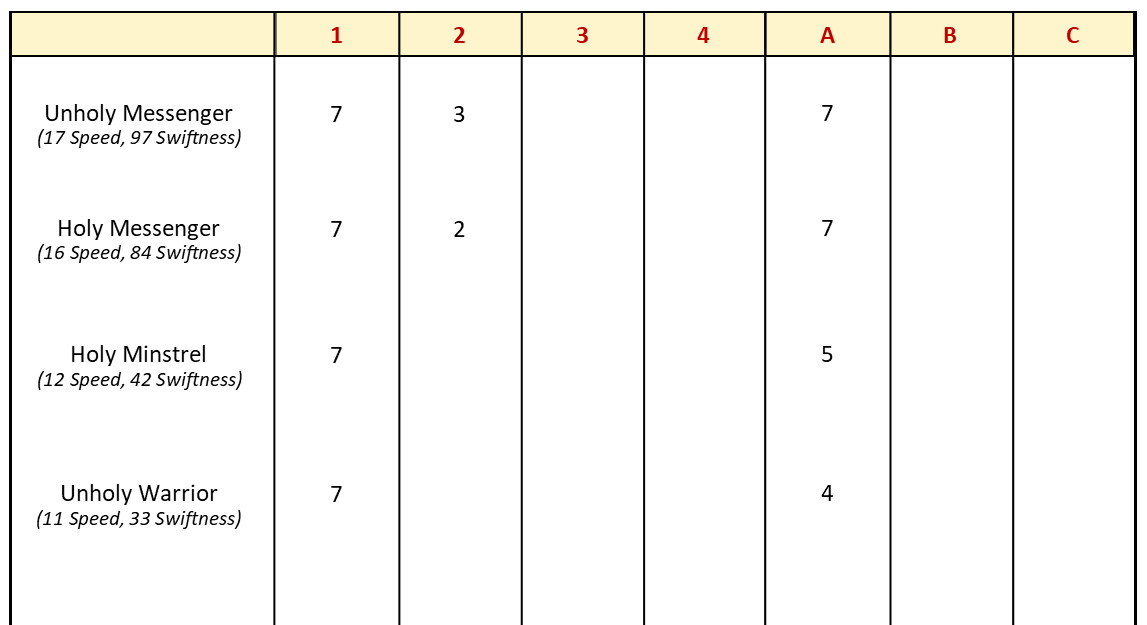Tutorial #3 Action Point Distribution: Segments, Turns, & Cycles
The details of how Action Points are assigned into character Turns can seem a bit tricky until you get your mind around it. In this tutorial we will try to break it down into a simple and understandable process.
Characters act in order of decreasing Swiftness during any Segment in which they have an Turn. They will get to act for a number of total Action Points each Cycle equal to their Speed.
These Action Points are assigned to Turns during Segments of the Cycle. The 7 Segments of each Cycle in order are Segments 1, 2, 3, 4, A, B, C. These Segments will be laid out in a War Scroll such as this:
Action Points are assigned in increments of 7 to these Segments in a specific order until all Action Points have been assigned to a Segment. If fewer than 7 Action Points remain, assign what are left.
The intent behind how these Action Points are assigned is to provide as much intermingling of Turns as is practical. While a turn-based game cannot ever be completely real time, this intermixing of activity can help the game to feel a little more real time in practice.
It might help to think of splitting the Segments into a First Portion of the Cycle and a Second Portion of the Cycle. The First Portion consists of the numbered Segments. The Second Portion consists of the lettered Segments. Action Points are applied Segments that alternate between numbered and lettered. 1 then A. 2 then B. Continue this pattern until all Action Points the character has in the Cycle are applied to a Segment.
So, for this example, lets make a War Scroll order for two characters, Rahniel and a Locust. Rahniel has 18 Speed and 105 Swiftness. The Locust has 12 Speed and 42 Swiftness. Rahniel has the higher Swiftness and therefore will always have Turns before any Turns of the Locust. So then let’s go ahead and assign Turns for Rahniel. 18 Speed would give 18 Action Points during the course of the Cycle. We would assign an Turn for 7 Action Points in Segment 1a, an Turn of 7 Action Points in Segment 1b, and the final Turn for 4 Action Points would be assigned in Segment 2a. The Locust has only 12 Speed giving 12 Action Points during the course of the Cycle. We would assign an Turn for 7 Action Points in Segment 1a and then assign the last 5 Action Points to Segment 1b.
If we were to play out a Cycle, Rahniel would have an Turn for 7 Action Points followed by the Locust for 7 Action Points. Next Rahniel would have an Turn for 4 Action Points. After that, Rahniel would have a final Turn for 7 Action Points followed by the Locust’s final Turn for 5 Action Points. The Cycle would be over and we would proceed to the next Cycle repeating this process.
This concludes Tutorial #3: Action Point Distribution. In the next Tutorial we will cover Ranges.
